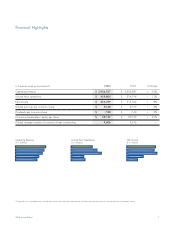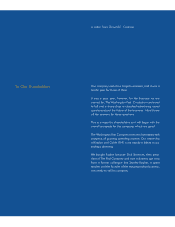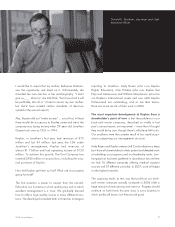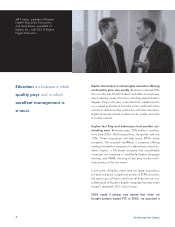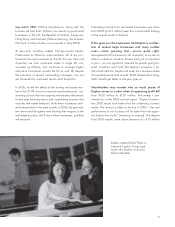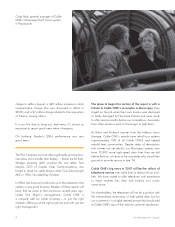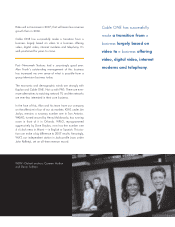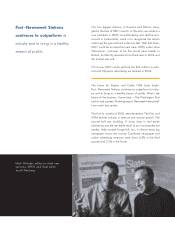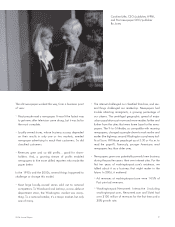Washington Post 2006 Annual Report Download - page 12
Download and view the complete annual report
Please find page 12 of the 2006 Washington Post annual report below. You can navigate through the pages in the report by either clicking on the pages listed below, or by using the keyword search tool below to find specific information within the annual report.
10
Perhaps as important to the long run, readership of two
kinds grew. We had a far greater readership in our home
area than any other newspaper website in a top-25 city,
according to Scarborough Research. But most of our
readership (85% of our unique users) came from outside
the Washington area, giving us substantial national/inter-
national readership (and advertising) on the internet.
Thus, The Post holds some cards that some other metro-
politan newspapers don’t:
•The highest print newspaper penetration in a top-25
metropolitan area.
•The highest internet penetration of any newspaper website
in such an area.
•By far the highest readership of any newspaper among
members of Congress and top administration officials.
•Alarge and growing national/international internet
readership.
•An extraordinary staff — journalists above all — but our
circulation and production departments are the envy of
our peers, and the talent and depth of our local sales
force is a tremendous asset.
Will all these strengths be enough to overcome the tides
that ran against the newspaper business in 2006? No one
knows the answer to that question. But shareholders
should understand the strength of our belief in The
Washington Post. Since going public in 1971, this com-
pany has compiled a record of responsible management,
and we will be responsible. But we also understand what
it means to publish The Washington Post and washington-
post.com, and we will be dedicated to those tasks.
Newspaper segment results for 2006 include $47 million
of expenses for a buyout of 193 people. Most of this
money came from our still-overfunded pension plan.
Publisher Bo Jones and general manager Steve Hills kept
ajudicious eye on expenses; The Post also developed an
ambitious loyalty program called Post Points, carefully con-
ceived to meet the needs of our readers and advertisers.
Jim Brady, editor, washingtonpost.com,
and Jennifer Moyer, chief operating
officer,WPNI



